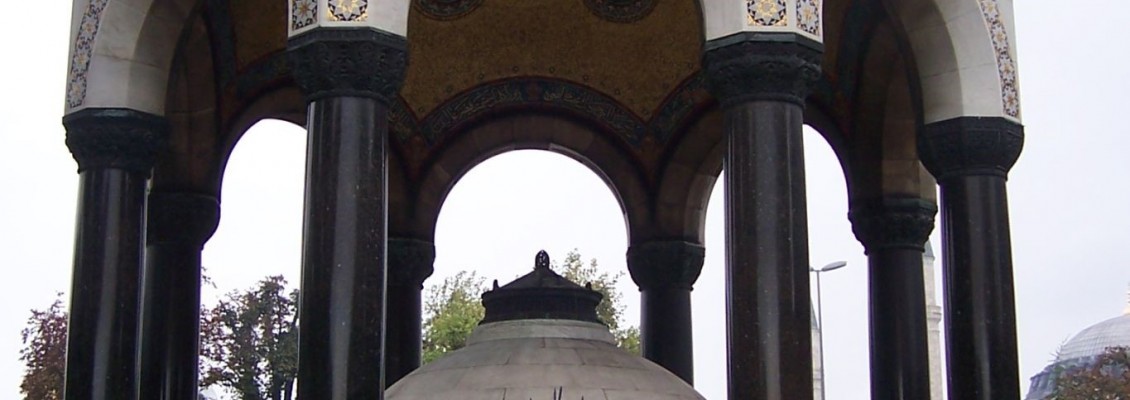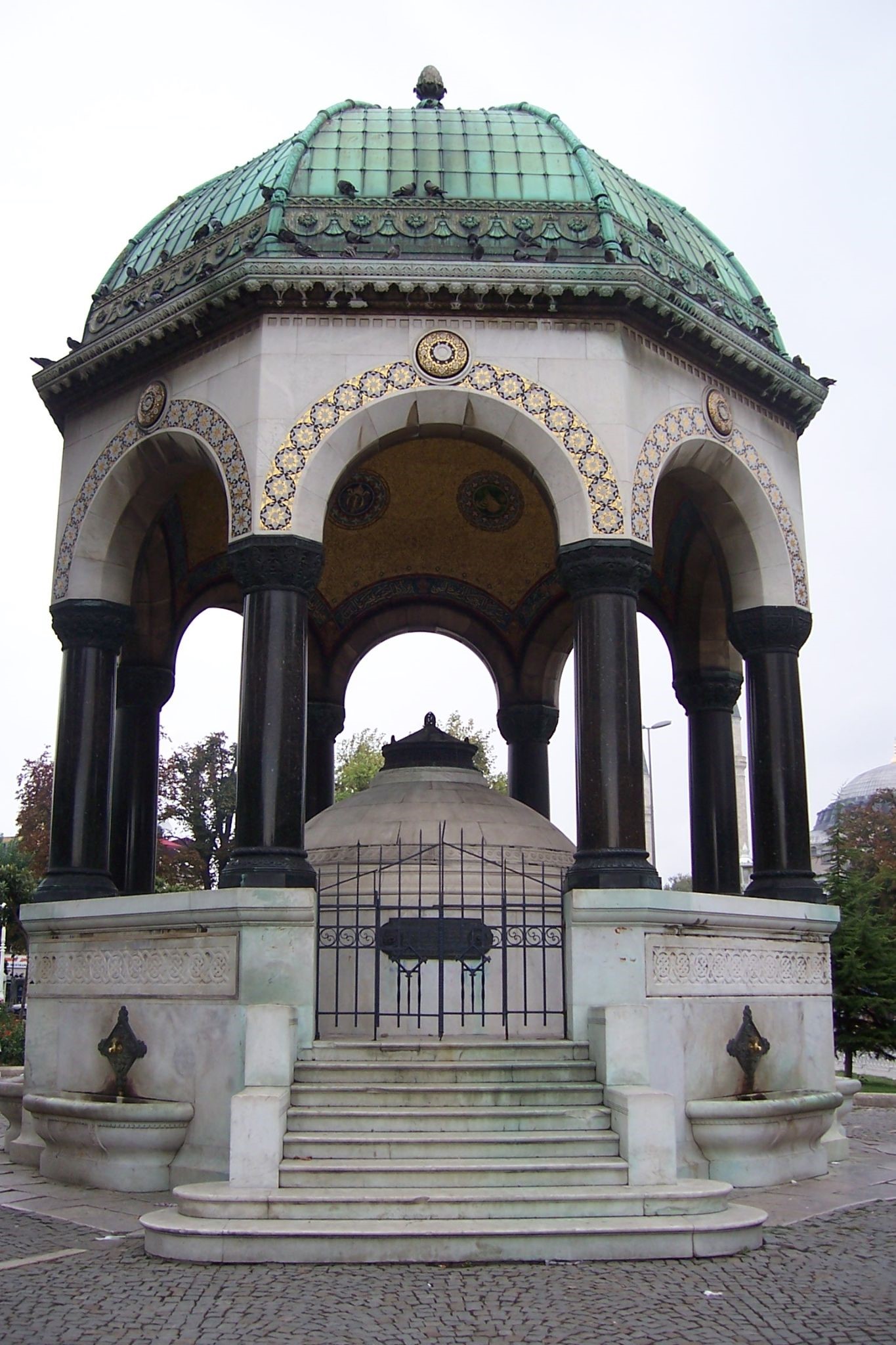
OTTOMAN TRACES IN ISTANBUL – 1 – FOUNTAINS
An important part of Ottoman social and architectural
history, fountains functioned as meeting places as well as water sources. The
oldest water structures date back to Roman times. After the conquest of Istanbul,
dilapidated water systems such as aqueducts were repaired, and new systems were
built to supply water to the citizens—throughout the later eras as well.
Fountains were one of these water sources. For a very long time, Turks had
always given great importance to water, and already had a number of practices
and beliefs about water. However, it became more crucial after the Turkish
people embraced Islam, as water has an essential role in Islam, especially in
terms of cleanliness.
It is considered a great
act of charity to provide water to thirsty people, which is the reason most of
the fountains were built in Ottoman times, helping a great deal of people.
Building a fountain is considered an ongoing good deed which will benefit the
person even after he passes away. When it was asked of the Prophet Muhammad ﷺ what the best charity is, he said “Providing
drinking water.” It was especially common for Sultans and their mothers, wives
and daughters to endow money for the construction of fountains, and this was
mostly for religious intentions. Fountains decorated the exteriors of houses,
especially after the 16th century, as well as their interiors. They represent
architectural style, change and novelty of their time. It is reported that
there were still 1,600 Ottoman fountains in Istanbul at the start of the 20th
century.
Visitors can see different types of fountain while strolling
around the city. Wall fountains are mostly fountains whose tanks are connected
to the wall, and they are built with dimension stone. They became particularly
popular after the 15th century, up until the 20th century. Shadirvan fountains
look like a stone stake rising from a basin with water pipes. They cannot be
found in Istanbul today, although they were thought to be common in the past.
Free-standing fountains were built in squares and across piers. They became
popular after the 18th century, influenced by westernisation. Another type of
fountain is the column fountain. This type of fountain emerged after the 18th
century. It was made by carving a waterway inside a marble column and adding a
pipe and a tap.
Noteworthy and famous fountains in İstanbul include:
The Fountain of Davut Paşa
A wall fountain, the Davut Paşa Fountain is considered one
of the oldest fountains in Istanbul. It was built in 1485 with Davut Paşa’s
endorsement. Davut Paşa was a vizier of Mehmet the Conqueror.

Fountain of Ahmed III
The Fountain of Ahmed III is located between the entrance of Topkapı palace and Hagia Sophia Mosque, both of which are in the Fatih district. This fountain is important in the way its architecture clearly demonstrates the transition to a more western style. It was built with the endorsement of Sultan Ahmet III in 1728 during the “Tulip period,” during which time a European influence started to manifest itself in art, architecture and so on. It features a square layout with five small domes on top. Within this square, each corner is a semi-circular protrusion, featuring three fountains with grilles. There is also a fountain at the centre of each facade. All surfaces have been so thoroughly decorated that there’s nowhere left unadorned, and although some of these decorations are in a Turkish decorative art style, one can also see motifs inspired by Western European art.

Gülhane Park Fountain
Observant visitors may notice a wall fountain at the
entrance of Gülhane park. The fountain was endorsed by Sultan Ahmed I and built
in 1605, later to be rebuilt in 1889 by Abdülhamit II. Calligraphic
inscriptions from both phases of construction have survived to the present day.
The German Fountain
The German fountain was built in the hippodrome square to
commemorate the second anniversary of German Emperor Wilhelm II's visit to
Istanbul in 1898. All parts of the fountain were prepared in Germany, then
brought to Istanbul and assembled there. It was built entirely in the
Neo-Byzantine style, which is different from traditional Turkish fountain
architecture. It is octagonal in shape, and a copper-clad dome sits on top of
eight arches supported by eight green columns. Accessed by a marble staircase
from the west, a corridor surrounds the marble chamber in the middle.


Leave a Comment